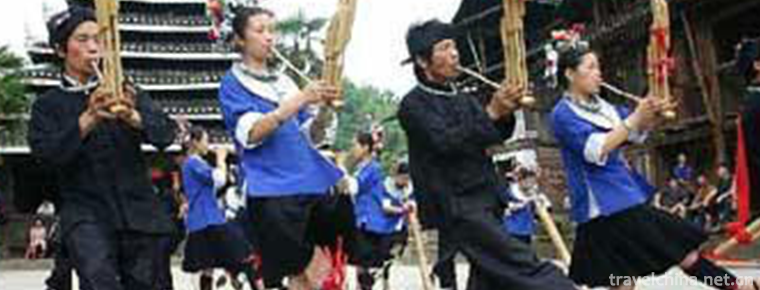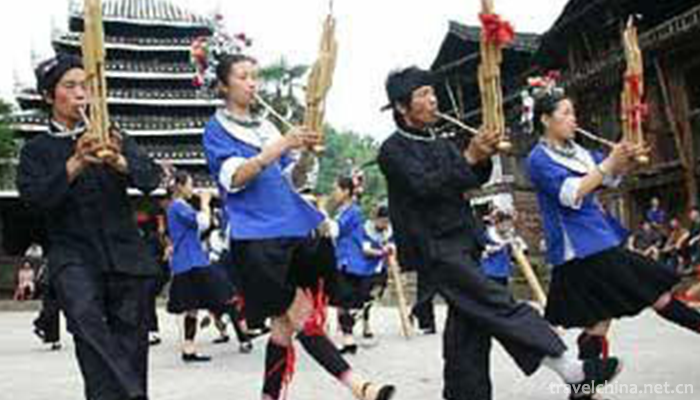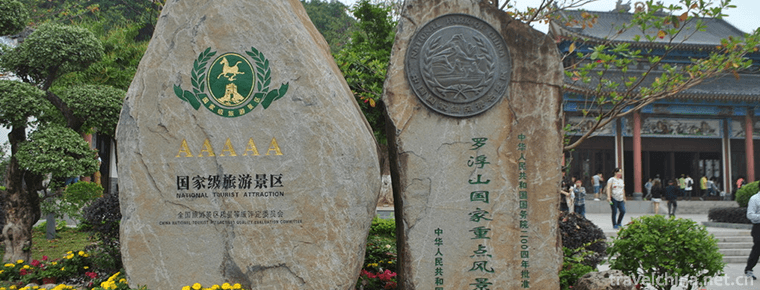2018-10-27

- By ChinaWiki.net
- Chinese Edition
- 2019-04-27
Dong year
In Dong year, Dong language is called Ninggan, also known as Winter Festival or Yang Festival. Winter Festival was originally a festival of Yang surname of Dong nationality. Initially, Yang Festival was used as Dong year in some areas of Liping, Rongjiang and Congjiang counties of Guizhou Province (between November 19 and 22 each year). Later, people gradually passed the Dong year after imitating each other.
In the early 1980s, the first day of November in the lunar calendar was the year of Dong, which was decided by the representatives of Dong nationalities from all over the country.
On May 23, 2011, the "Dong Year" declared by Rongjiang County, Guizhou Province, was listed in the third batch of national intangible cultural heritage list with the approval of the State Council.
Festival activities
During the festival, families kill pigs and sheep, chickens and ducks, invite visitors and friends for a feast. The day before the festival, they prepare tofu, fish and shrimp, cook them in sour water that night, and then cool them overnight into "frozen vegetables", on which day they sacrifice their ancestors with "frozen vegetables".
On this day, the Dong people prepared various pickles, frozen fish and bamboo buns to give to their relatives and friends, called "eating Yangbao". During the Lunar New Year, the other party should return them as many as possible, called "returning Yangbao".
The Dong people believe that after the autumn when grain is abundant, livestock is flourishing and all farming affairs are completed, the year of labor has passed and the new year is coming. Therefore, some places regard November as the beginning of the new spring, while others regard it as the end of the old year. In this regard, it is considered the end of the old year. In this regard, it is considered that the old year has gone, the new year has arrived, the grain is full of barns, and the end of the old year. When poultry and livestock are in full circle, pigs and sheep are slaughtered to celebrate the festival. Year after year, the festival is followed by the festival of the Chengdong nationality.
The Dong village in the seventy-two Zhai area of Rongjiang celebrates the New Year celebrations from the end of October to the beginning of November. In the Dong Dynasty, it is mainly a variety of flowers and presents for the elderly. It is a celebration of the ancestors. On the occasion of the new year, the family will clean up the front of the house and replace the new clothes for men, women and children. People will slaughter pigs and kill cows, and spring glutinous rice rakes. Activities, some young people take advantage of the occasion to hold wedding ceremonies, feasting relatives and friends.
In addition to the Dong year in early November, the two "accompanying years" of the performance contest are called "accompanying years". The so-called "accompanying years" refers to the Dong year at the end of November and the Spring Festival of the Han nationality accompanied by the nearby Dong people. The "accompanying year" is a program to strengthen national unity and increase friendship between the villages, both in form and in content.
There are two theories about the origin of the Dong year in this area. One is that the Longdong Dong people of Yandong first settled here, and then the ancestors of Luo, Huang, Wang and Gong came one after another. The ancestors of Luo surnamed were in harmony with the villages. On November 27, they killed pigs, slaughtered cows, beaten glutinous rice sticks and feasted their relatives. On December 1st, other families also held banquets to thank them. Another legend is that in the year of war and disorder, Luo surnamed ancestors. After hearing the news that the army was going to cross the border, it killed pigs and cattle on November 27 to celebrate the New Year. Later, other family members knew it and passed the New Year on December 1. From then on, until now, all kinds of legends have shown the festival contents of sacrificing ancestors. The rit*of the festival embodies the atmosphere of celebrating the New Year.
Inheritance and protection
In 2007, Dong year was listed in the second batch of intangible cultural heritage list of Guizhou Province.
On May 18, 2010, the State Council of China announced the third batch of national intangible cultural heritage list recommended items (new items). The "Dong Year" declared by Rongjiang County, Guizhou Province, was included in the category of folk-custom items.

Ask a Question
Your email address will not be published.



0 Questions